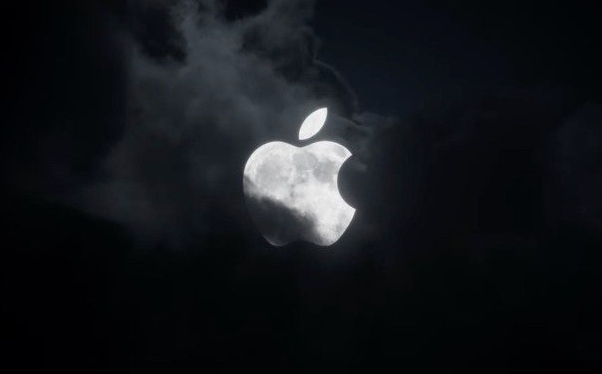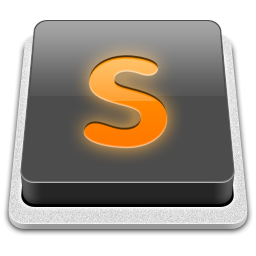How to use FTP on Mac
To transfer files using FTP on your Mac, third-party tools are recommended. The preferred method is to use FileZilla (free). After downloading and installing, enter the host, username, password and port (default 21) for quick connection. The left side is the local file and the right side is the server file. You can upload or download it by double-clicking it. Secondly, you can use the terminal command line to open Terminal and enter the ftp host address, and log in as prompts. Use ls, get, put and other commands to manage files. However, this method does not support SFTP and is complicated to operate. The "Guest Connection" mentioned in some tutorials is only suitable for non-encrypted FTP. It has poor compatibility. It is recommended to only use for temporary viewing. Overall, FileZilla is the most stable and intuitive choice, while terminals are suitable for occasionally transferring small files.

It is actually not difficult to use FTP to transfer files on a Mac, but the system itself does not have a graphical FTP client, so it needs to use third-party tools to operate. Here are some common and simple methods.

Recommended use: FileZilla (free)
This is one of the most commonly used FTP tools, cross-platform, full-featured, suitable for beginners and veterans.
- Download and install FileZilla, the official website has a macOS version
- After opening it, fill in the four boxes at the top:
- Host: Your server address (such as ftp.example.com)
- Username: Login account
- Password: Corresponding password
- Port: Generally, the default is 21. If not, please confirm it.
Click "Quick Connect" to enter. On the left is your local file, on the right is the content on the server. Just double-click to upload or download.

If you are used to terminal: use command line operation
Mac comes with a command line FTP tool, which is simple but sufficient.
Open Terminal and enter:

ftp host address
Then follow the prompts to enter your username and password. After entering, you can use ls to view the directory, download get 文件名, and upload put 文件名.
However, this method is not very friendly to people who are not familiar with commands, and does not support SFTP, which makes security and modernity almost meaningful.
Not recommended: Mount remote directory through guest connection
Some tutorials say to add an FTP address in the "Guest Connection" and then access FTP like you would access the disk. This method can only be used for FTP (non-encrypted). Now many servers use SFTP instead, so it may not be used.
Moreover, the experience is not very good, it is easy to disconnect, and upload and download cannot be processed in batches. It is recommended to only use it as a temporary file viewing.
In general, FileZilla is recommended for daily use, which is stable and intuitive; occasionally you can pass on small files, and you can also try terminal commands. Although FTP is old, it is quite common in some website maintenance and server management scenarios.
The above is the detailed content of How to use FTP on Mac. For more information, please follow other related articles on the PHP Chinese website!

Hot AI Tools

Undress AI Tool
Undress images for free

Undresser.AI Undress
AI-powered app for creating realistic nude photos

AI Clothes Remover
Online AI tool for removing clothes from photos.

Clothoff.io
AI clothes remover

Video Face Swap
Swap faces in any video effortlessly with our completely free AI face swap tool!

Hot Article

Hot Tools

Notepad++7.3.1
Easy-to-use and free code editor

SublimeText3 Chinese version
Chinese version, very easy to use

Zend Studio 13.0.1
Powerful PHP integrated development environment

Dreamweaver CS6
Visual web development tools

SublimeText3 Mac version
God-level code editing software (SublimeText3)
 How to check for dead pixels on Mac screen
Jul 20, 2025 am 02:45 AM
How to check for dead pixels on Mac screen
Jul 20, 2025 am 02:45 AM
To check for bad Mac screens, you can use the monitor to test the website, macOS-owned features, or third-party applications. ① Visit deadpixeltest.org and other websites to display solid color images such as red, green, and blue in full screen, and observe whether there are fixed black spots or color spots in dark light environments; ② Create solid color full-screen images through the "Preview" App and enlarge to view details, or zoom to check suspicious areas after screenshots; ③ Install PixelTester, LCDInspector and other tools for more systematic detection, supporting custom pattern and brightness simulation; ④ Pay attention to distinguishing bad points from dust or stuck pixels, the latter may be restored through repair tools. After confirming that it is a bad point, you should contact Apple's official after-sales service in time.
 How to Control Fan Speed on Apple Silicon Mac & MacBook Pro
Jul 17, 2025 am 09:05 AM
How to Control Fan Speed on Apple Silicon Mac & MacBook Pro
Jul 17, 2025 am 09:05 AM
Although MacOS takes care of cooling fan management automatically, there are specific scenarios where its approach may not be the most effective. Experienced users may find it useful to manually adjust the fan speed on their Apple Silicon Mac, especi
 How to type special characters on a Mac
Jul 21, 2025 am 01:11 AM
How to type special characters on a Mac
Jul 21, 2025 am 01:11 AM
Thereareseveralbuilt-inmethodstotypespecialcharactersonaMac.1.UsekeyboardshortcutswiththeOptionorShiftkeyforcommonsymbols,suchasOption ethenspacebarforanacuteaccent(´),orOption gforthecopyrightsymbol©.2.Pressandholdaletterkeytoaccessaccentedvariantsl
 How to show the path bar in Finder
Jul 15, 2025 am 12:07 AM
How to show the path bar in Finder
Jul 15, 2025 am 12:07 AM
To open the macOSFinder path bar, click the "View" menu and select "Show path bar". The path bar is located at the bottom of the window, showing the hierarchical path from the current location to the root directory, which is different from the status bar that displays the number and size of files. Use the shortcut key Shift Command P to quickly switch the path bar. If the path bar is not obvious in dark mode, you can switch to light mode or hover over it to enhance contrast. There is usually no need to adjust repeatedly after setting it once, unless the system environment is changed or when performing a demonstration.
 What is Spotlight search on Mac
Jul 15, 2025 am 12:08 AM
What is Spotlight search on Mac
Jul 15, 2025 am 12:08 AM
Spotlight Search is a quick lookup tool on your Mac, open via the Command(⌘) space bar, trackpad gesture, or clicking on the magnifying glass icon. It supports searching files, applications, emails, weather, calculations, etc., and can improve search efficiency by adding qualifiers. To adjust search results, you can modify the options for the Search Results and Privacy tabs in your system settings. If there is a problem with Spotlight, try rebuilding the index: add and delete the main disk in the Privacy tab. Mastering these tips can significantly improve the efficiency of your Mac using everyday.
 How to set up email on a Mac?
Aug 04, 2025 am 07:48 AM
How to set up email on a Mac?
Aug 04, 2025 am 07:48 AM
OpentheMailappandclickAddAccount,thenenteryourname,email,andpassword.2.Selectyouremailprovider—iCloud,Gmail,Yahoo,orOutlook.comwillauto-configureusingOAuth.3.Forunsupportedproviders,choosemanualsetupandenterIMAP/SMTPserverdetailsincludinghostnames,po
 How to fix a flashing folder with a question mark on Mac
Jul 26, 2025 am 03:04 AM
How to fix a flashing folder with a question mark on Mac
Jul 26, 2025 am 03:04 AM
RestartandholdtheOptionkeytoaccesstheStartupManagerandselectyourstartupdisk.2.BootintoRecoveryModeusingCommand R,thencheckorchangethestartupdiskintheStartupDiskutility.3.UseDiskUtility’sFirstAidtorepairtheinternaldriveifitappearsbutwon’tmount.4.Reset
 How to change sound output on Mac
Jul 28, 2025 am 01:30 AM
How to change sound output on Mac
Jul 28, 2025 am 01:30 AM
Clickthesoundiconinthemenubartoquicklyselectanavailableoutputdevice.2.GotoSystemSettings>Sound>Outputfordetailedcontrolovervolume,balance,andaudioformat.3.UsetheOptionkeywiththesoundiconortheAirPlayicontostreamaudiotoAirPlay-compatibledevices.4







